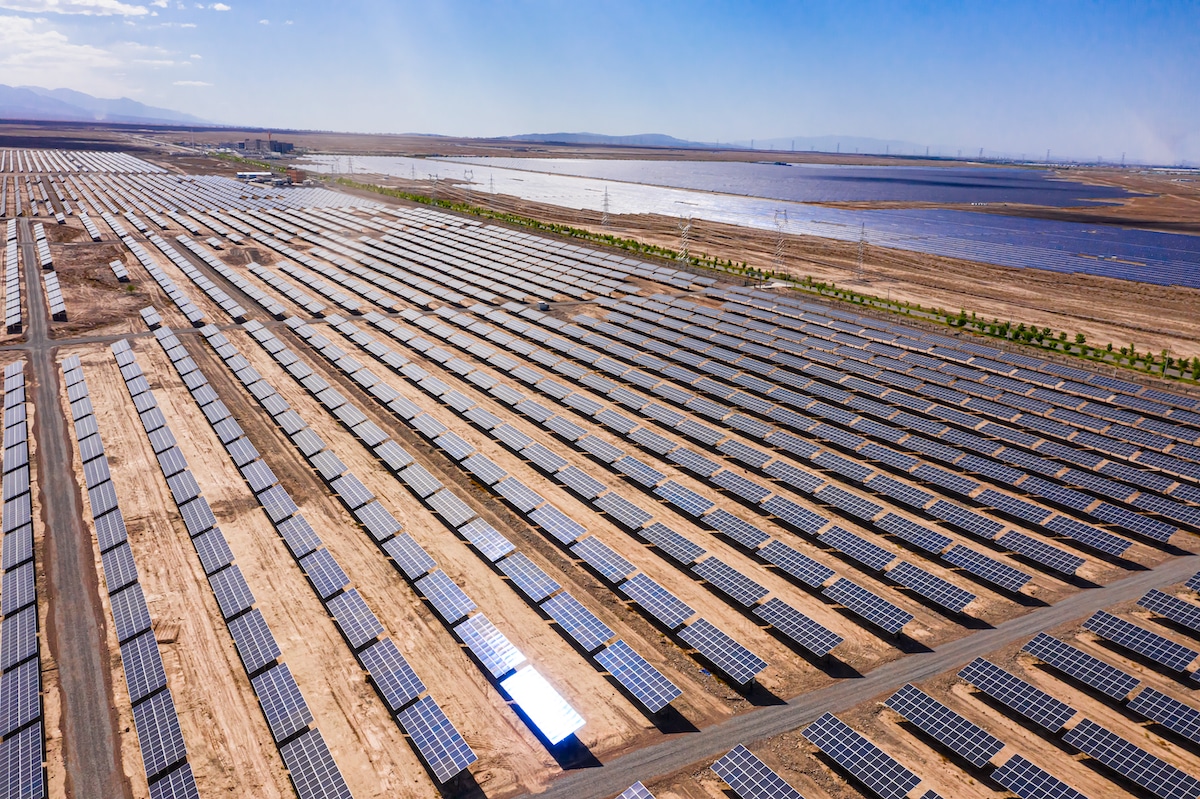Products You May Like
A solar energy plant under construction in the Gobi Desert in Jiuquan, Gansu Province of China on June 9, 2022. VCG / VCG via Getty Images
 Why you can trust us
Why you can trust us
Founded in 2005 as an Ohio-based environmental newspaper, EcoWatch is a digital platform dedicated to publishing quality, science-based content on environmental issues, causes, and solutions.
China broke records for coal output in 2022, but there’s other energy news from the world’s No. 1 emitting nation that’s a little brighter from a climate perspective.
It also broke records for new solar capacity added last year, according to figures from the National Energy Administration (NEA) published on Wednesday, installing a total of 87.41 gigawatts (GW). And it’s possible another record will be broken this year.
“China’s solar installations could ‘effortlessly’ reach 100GW this year, given sharp falls in solar panel and material prices in recent weeks that will encourage developers to kickstart large-scale projects soon,” Asia Europe Clean Energy (Solar) Advisory founder Frank Haugwitz said, according to a summary of his remarks from the South China Morning Post.
More From EcoWatch
The 87.41 GW of new solar capacity amounted to a 60.3 percent increase in capacity growth compared to 2021, PV Magazine reported. This brings total capacity to 392.61 GW, which was a 28.1 percent increase from the year before. Nearly a quarter of the added capacity came in the last month of the year, when China tacked 21.7 GW on to the 65.71 GW installed during the first 11 months of 2022.
China is working to increase its renewable energy capacity in keeping with its goal of reaching peak greenhouse gas emissions by 2030 and net zero emissions by 2060, as the South China Morning Post explained. It was less successful with added wind capacity in 2022, adding only 37.63 GW, or 21 percent less than in 2021, according to PV Magazine. This is because the government stopped offering subsidies for onshore wind farms in 2021 and offshore wind farms this year, according to the South China Morning Post.
Solar capacity, while record breaking, was less than anticipated because of supply chain issues, Bloomberg reported. A decline in the supply of solar material polysilicon drove up its price to decadal heights, in turn increasing the price of solar panels and decreasing demand. But the relaxing of the supply chain crunch should give solar an added boost in 2023. The outlook for wind is set to improve as well.
“We expect it to pick up sharply in 2023, especially offshore wind projects, since coastal provinces still have subsidy policies [until 2024 or 2025] to support new installations,” Daiwa Capital Markets regional head of utilities research Dennis Ip told the South China Morning Post.
China has set a goal of reaching a total of 430 GW of wind capacity and 490 GW of solar capacity by the end of 2023, which would mean installing 64.5 GW of new wind and 97.4 GW of new solar this year.
At the same time, China has said it will build new coal plants, which could increase coal capacity by 270 GW by 2025. Overall, the amount of new fossil fuel capacity added decreased in 2022. China added 35.6 GW of coal and natural gas plants, a decline from 51.6 GW in 2021 and 54.6 GW in 2020.
However, the country still got 67.3 percent of its energy from these plants during the first 11 months of 2022, while low carbon energy projects only contributed 32.7 percent.
Subscribe to get exclusive updates in our daily newsletter!
By signing up, you agree to the Terms of Use and Privacy Policy & to receive electronic communications from EcoWatch Media Group, which may include marketing promotions, advertisements and sponsored content.
